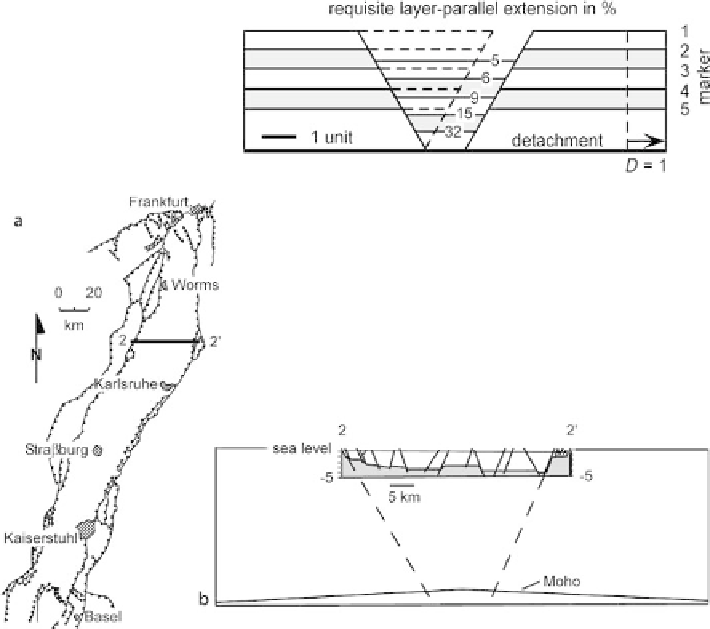Geology Reference
In-Depth Information
Fig. 11.63.
Strain in the graben of an
area-balanced model (after
Groshong 1994). The
dashed
lines
indicate the position of
the graben before deforma-
tion. Strain magnitudes are
in percent
Fig. 11.64.
Rhine Graben (after Groshong 1996).
a
Index map.
b
Cross section 2-2' inserted in a crustal
profile. Triassic and younger sediments
unshaded
. The seismic refraction Moho is the base crust. (Illies
1977; Ziegler 1992; Rousset et al. 1993)
According to Eq. 11.11, the extension is
β
L
- 1 = 34% extension and is
uniform with depth. This is clearly much different than the extension calculated di-
rectly from the model and shows the importance of the dip of the boundary faults.
The Rhine graben (Fig. 11.64a) provides an example of the dependence of the cal-
culated extension on the model selected. The profile (Fig. 11.64b) is from the central
area of the Rhine graben where it is relatively symmetrical, although the graben is
asymmetrical to the north and south (Brun et al. 1992; Bois 1993; Rousset et al. 1993).
The symmetry reverses across the profile area. The section to be interpreted was shown
to be sequentially restorable by rigid block displacement in Fig. 11.9, thus it is valid.
Length and area measurements were made on the preserved contact between the Per-
mian and older basement and the Triassic Buntsandstein (shown in Fig. 11.9 and 11.64b).
Because shallowly buried rocks are both brittle and weak in extension, it is mechanically
reasonable, although not certain, that nearly all of the layer-parallel extension within the
sediments, including the Permian and older sediments of the shallow basement, occurs on
the visible faults. The extension of the top-basement is 6.3% (Eq. 11.2), based on the bed
β
L
= 1.34 or
e
L
=

